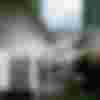Remscheid, October 2018 – "With Gefertec technology, we're able to reduce our production costs by up to 80 percent for high-volume parts, compared to a powder bed process", says an enthusiastic Matthias Otte, who is responsible for additive manufacturing at Rolf Lenk Werkzeug- und Maschinenbau. Otte is referring to the new 3D Metal Print, or 3DMP, process. Berlin-based company Gefertec, founded in 2015, is currently the world's only provider of this technology. Generative production methods – often referred to as 3D printing – have long been a hot topic in the manufacturing sector and metal component production, and the method is viewed as one of the key technologies in the transition to digital Industry 4.0 production.
Gefertec's 3DMP is a revolutionary process that opens up a host of new possibilities and boasts a number of advantages over conventional techniques. Unlike the standard powder-based process used to date, the new printing method uses tried-and-tested light arc welding and wire. The melted welding material is applied in layers to build the metal component.
Accurate workpiece positioning is crucial to the success of this process. In all of its five-axis 3DMP machines, Gefertec uses two-axis rotary tilt tables from Peiseler – a global market leader for this technology and numerous other subdevices. Gefertec also offers a three-axis machine in which the welding torches move along x, y and z axes, but most applications require five-axis processing. The Peiseler rotary tilt tables complete the system with two rotary axes, making them one of the core components of the machine. The ZATC 300 is used in the arc 405, the smaller Gefertec machine, while the larger arc 605 is fitted with the ZAS 320. The available space is a key design criterion.
"Generative manufacturing was new territory for us, and it comes with a completely different set of requirements to conventional machining", explains Dr Benedict Korischem, Managing Director at Peiseler. "We committed to the challenge and see enormous potential for our company in our customers' innovative production processes". Generative manufacturing is already being used to produce a wide range of metal components: Gefertec customers span sectors such as tool engineering, ship building and rail transport.









